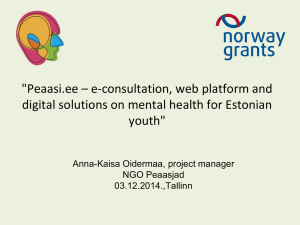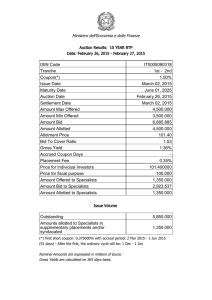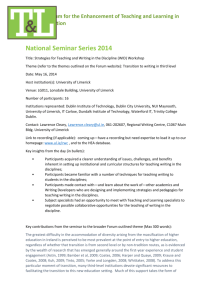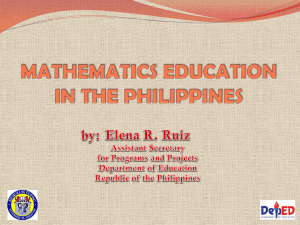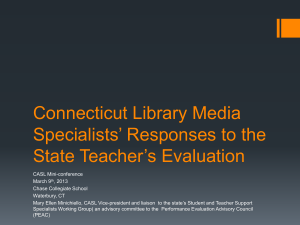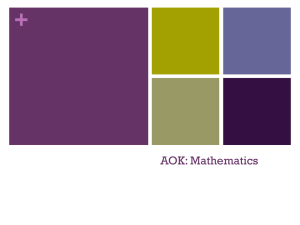English as an Additional Language (EAL) Science Language
advertisement
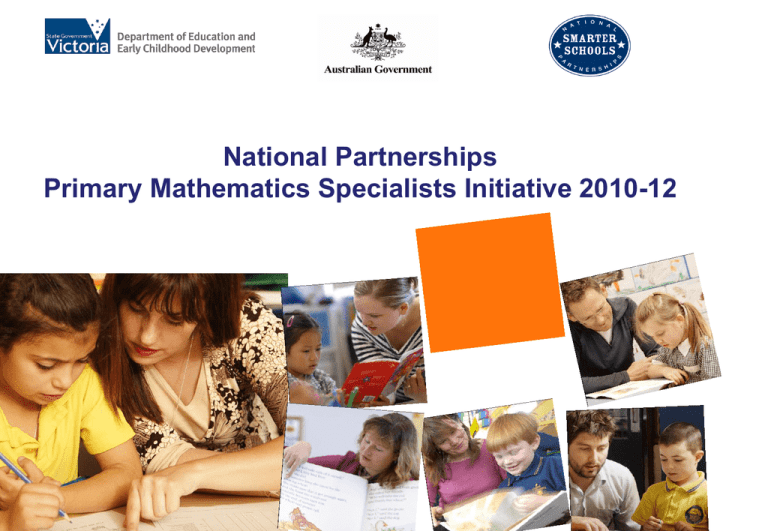
National Partnerships Primary Mathematics Specialists Initiative 2010-12 Primary Mathematics Specialists Initiative Outcomes To deliver improved primary student results in mathematics To increase workforce capacity To build sustained continued improvement in teacher capacity within schools Implementation Model 3 specialists per school; 3 schools from 1 network in each of the 9 regions 0.3 FTE: Specialists work with colleagues within their school 0.2FTE: Specialists work with colleagues in their network 0.5FTE: Specialists work as a classroom teacher Evaluation Did we… 1) implement the Specialists initiative effectively? 2) build sustained teacher capacity? 3) improve student outcomes in mathematics from P-6 4) improve student cohort achievement in mathematics? Key findings Effective Implementation System Network School Key Findings Building Teacher Capacity “Every child enjoys and is engaged with maths. The differentiation in the lessons has meant that all children are supported at their level and all are experiencing success. Teachers have changed their way of teaching in other subjects as well due to the influence and the success they are having in maths with the support of the specialists” “The confidence of the maths teachers is contagious. Parents are very happy with the way in which maths is now being taught” “Our three specialists have effectively contributed to whole school development, content based learning and networking learning with other schools. The power in this project is having the skills of our people developed thus, internalising the approach to commence sustainable practice” Key Findings Building Teacher Capacity continued Key Findings Improved Student Outcomes Overall achievement growth in… Evident in… Prep Year 2 students Mathematics Online Interview Year 3 6 students VCAA On Demand for Number ATSI, LBOTE, New Arrivals and Refugee cohort students VCAA On Demand data Key Findings Improved Student Outcomes Prep – Year 2 The percentage of students in the ‘at risk’ category by sections of the Mathematics Online Interview for March and September 2011 Key Findings Improved Student Outcomes Years 3-6 The average difference in expected growth in student achievement by year level and level of initiative implementation – March to September 2011 Key Findings Improved Student Cohort Outcomes • • • • LBOTE: Higher than the expected level, and higher than all other students in the project in both the 2009 and 2011 NAPLAN test ATSI: achieved scores well below other students on both the 2009 and 2011 NAPLAN test. Refugee: The small sample of Refugee students performed above the average in Years 3 and 4. New Arrivals: The data sample size was too small to make a reliable assessment of growth Conclusion Future Focus on… Sustainability


